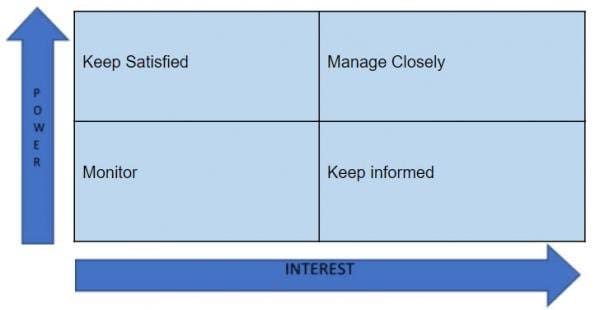Situational awareness for managing risk is essential. Risk management is a state of mind with forethought, like safety and quality. It cannot be boiled down into tools and techniques. Tools and techniques are involved, but to be genuinely effective at risk management requires a trained mind — a situational awareness. The mind needs to focus on the what-ifs, how to address them, and on situational awareness. Interested in finding out about situational awareness for managing risk? Read further for more examples of situational awareness for context.
The situationally aware project manager
Similar to driving a car or flying a plane, being situationally aware helps to identify potential risk points. Here’s an example of situational awareness. When you are behind the wheel of your car, you are looking more cautiously at intersections for where someone could pull out in front of you. When driving in the woods, you respond to the deer crossing sign by watching the shoulders and tree lines for the creatures. In the same light, a situationally aware project manager will be thinking through the project to identify where the delays will initiate and where the additional costs will originate.
Situational Awareness For Managing Risks
When the situationally aware project team identifies risks, the next step is to identify a response to the risk. What response does the pilot perform if the plane’s engine cuts out? A trained pilot is always looking for the next safe landing area for this very situation. What if another aircraft suddenly appears in the area? The trained pilot will steer towards the open air or turn right if the other plane is directly ahead. These are already predefined before the pilot enters the situation. Likewise, project team members should train their minds to prepare a response to perceived risks to the project.
So, how does a project manager or team member become situationally aware? The response is to train the mind. Training the mind to be situationally aware is not difficult but requires effort over a period of time. This is where risk management tools and techniques come in handy. A daily solo brainstorming session can help you renew your attention to being situationally aware.

Think about the last time you were in a risk management session with your project team. Picture the team sitting around the table, staring at each other, trying to devise a new risk. Remember the same list of risks that are presented in every project and every session. This brainstorming session focuses on identifying risks, but risks do not occur in a static environment. The project is an ever-changing landscape. Every decision and every event creates a new picture of the project for the risks to jump at you. This dynamic environment is why project managers struggle with risk management. Therefore, constant vigilance must be developed and maintained.
Being situationally aware requires understanding the current situation of the project and what will come next. This requires a significant amount of data. The pilot has navigation systems, instruments, weather reports, and eyes on the skies. This all gives the pilot information about the current situation. The flight plan identifies where the plane is to go next.
Similarly, the project team needs to be current on the project’s status: the current cost report, what has been completed, what resources are available, the contract terms, weather (if the project can be affected), labor market, and business impacts. These data sources will provide a picture of today’s project environment. The updated project schedule and plans will tell the project team where the project is going. Your risk register supports your memory of your risks and plans and becomes your communications tool with other team members and stakeholders.
It is critical to review the project status frequently to maintain awareness of the current environment. It is also critical to regularly review the updated schedules and plans to be aware of the next steps of the project journey. Then, hold a solo brainstorming session to identify imminent risk points. Where is the next intersection? What would my reaction be? Document your analysis in the risk register so team members can respond accordingly.
Risk management is more than a set of tools and techniques. Risk management is about becoming situationally aware. Each team member needs to understand the project’s status and how it is planned to proceed while looking for things that could impact it. Like safety and quality, risk management needs to be a state of mind ingrained in the organization’s culture. Then, we can genuinely say we are managing the risks of our projects.
FAQ’s
What is situational awareness?
Situational awareness is the ability to understand the current environment and anticipate what is likely to happen in the near future.
Why is situational awareness important for managing risk?
Situational awareness is important for managing risk because it allows individuals and teams to identify potential risks and take appropriate action to mitigate or avoid them.
How can you develop situational awareness?
Situational awareness can be developed by regularly reviewing a project’s status, staying up-to-date on relevant data, and holding solo brainstorming sessions to identify potential risks.
What are some examples of situational awareness in action?
Examples of situational awareness in action include a pilot identifying a safe landing area in case of an engine failure, a driver watching for potential hazards on the road, and a project manager anticipating delays or cost overruns.
What role do risk management tools and techniques play in situational awareness?
Risk management tools and techniques can help develop situational awareness by providing a structured approach to identifying and addressing potential risks. However, they should not be relied on solely and should be integrated into a broader situational awareness mindset.
Similar Content:
-
KPIs for executive oversight (Part 1): What should an executive monitor?
-
Risk registers: Do your risk descriptions meet the bar?
-
No time for risk management? Tips on how to factor risk into a Work Breakdown Structure
What is a Stakeholder?
According to the PMI Guide to Business Analysis, “A stakeholder is an individual, group, or organization who may affect, be affected by, or perceive itself to be affected by a decision, activity, or outcome of a project, program, or portfolio.” Stakeholders can be internal or external to the project, including the project sponsor, project team, customers, and suppliers. If certain stakeholders are not managed effectively during a project, there is a risk that it may be stopped. Stakeholder Engagement is” the process by which an organization involves people who may be affected by the decisions it makes or can influence the implementation of its decisions.” The following three steps can be implemented during business analysis initiatives on a project to maintain positive stakeholder engagement.
Step 1: Identify stakeholders
Identifying stakeholders involves identifying all affected people or organizations throughout the project life cycle and documenting information regarding their interests, independencies, influence, and potential impact on project success. It involves determining who is impacted by the project, their interests, whether the stakeholders are internal or external, and who are the most important ones. It also involves using tools such as brainstorming, expert judgment, documentation review, and lessons learned from previous, similar projects to identify the project stakeholders. The process output is a Stakeholder Register, which recognizes the people, groups, and organizations with any interest or involvement in the project and includes names, titles, roles, interests, power, requirements, expectations, type of influence, etc. The participation of stakeholders on a project may include sponsorship of the project, confirmation of business requirements, approval of project documents, and testing of the deliverables.
Step 2: Analyze stakeholders
The next step is to put together a detailed stakeholder analysis with the team that is involved in the project. Stakeholder analysis is used to identify key stakeholders and to assess interests, positions, alliances, and importance given to the project by the stakeholders. Such knowledge allows business analysts to interact more effectively with stakeholders and to obtain their support. Conducting such an analysis before the project starts “allows project managers to detect and take measures to avoid misunderstandings and potential opposition to the project” (Bright Hub Project Management). It’s essential to identify and examine key factors such as proximity to the project, demographics, interest in the project, needs and concerns, expectations of the project, and any previous project communications. Stakeholders’ interests can be used further, as well as criteria such as whether they are resistant, neutral, and supportive concerning the initiative. The Power/Interest Grid shown below is a simple tool that helps to categorize project stakeholders based on their increased power and interest in the project and helps to focus on the stakeholders who can make or break the project, thereby prioritizing the stakeholders, e.g., stakeholders that lie in the Manage Closely quadrant can contribute towards project failure if they are not managed properly during the project.
Step 3: Manage stakeholder expectations
It is also important to plan for stakeholder engagement upfront by articulating management strategies to engage them. Different stakeholders have different opinions on how the project will benefit them; hence, it is crucial to understand and document those expectations. Therefore, meeting the stakeholders regularly and updating them on the project’s progress is essential. Effective communication ensures that stakeholders receive information relevant to their needs and builds positive attitudes towards the project. Investment in careful planning before engaging stakeholders will, therefore, bring significant benefits in the future.
The communications management plan can be used to define the project’s communication requirements, how information will be distributed, the frequency of distribution, the level of details and format, and who is responsible for communicating with stakeholders. Communicating with the stakeholders early and often and including reporting on progress will ensure that they fully understand the initiatives and the benefits; hence, they can be more actively supportive in the future.
Other important documents, such as the Issue Log, can also be used to record, manage, and communicate all the issues related to the project.
Similar Content:
-
Business analysis planning considerations
-
Part 1 – An introduction to business analysis skills and domain concepts
-
Shifting from stakeholder management to stakeholder engagement


